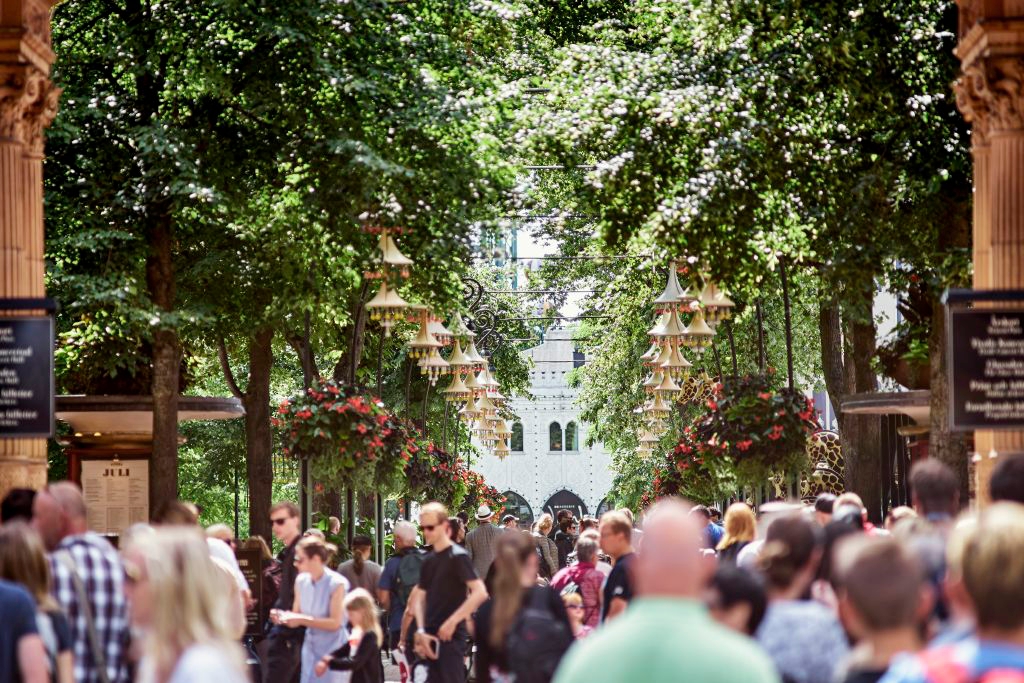There is a new type of treasure sprouting forth handsome rewards. No, it’s not another unearthed Viking relic, but the fruiting body of the subterranean Ascomycete fungus. Also known as the truffle.
As Nordic gastronomy continues its meteoric rise, spurred on by renowned restaurants like Noma, truffles have never been as popular. And they’ve never been as plentiful either.
Coincidental or climatic?
One person who sees potential for truffles in Denmark is Jes Aagaard, an expert with the nature authority Naturstyrelsen.
Aagaard was stunned in disbelief when he laid his eyes on 20 massive summer truffles found by the trainee chef Andreas Kryger in his in-laws’ garden in Borup, south of Roskilde, in August.
“I think it’s a question of attention. Normally we don’t see so many. The climate is good for truffles this year and we don’t usually see many in Denmark because, unlike nations where truffles are traditionally found, we don’t have trained dogs to find them here,” Aagaard told the Weekly Post.
“Some of the truffles I found were much bigger than is typically the case. Perhaps it is a coincidence and maybe it’s down to climate conditions being more favourable this year. Whatever the reason, we have seen more of them this year.”
Mild winter possibility
Aagaard wouldn’t draw any definite conclusions between the truffle increase and climate change, but he could very well have a point about the climate potentially having an impact.
The last four winters in Denmark, going back to the one in 2011-2012, have all been milder than usual, which could account for conditions more favourable for truffles, such as the ones typically seen in France or Italy.
Truffles are not common in Denmark at all, and since 1903, there have only been 22 registered finds. But this year alone, there have already been at least two: the one in August involving Aagaard, and the discovery of an extremely rare truffle, Tuber macrosporum (also known as the smooth black truffle), near Nakskov on Lolland this month.
Additionally, a new species of mushroom was discovered in Marieskovlunden near Kolding in southern Jutland and Danish scientists have also found a tiny new fungus in the forests of Skindbjerglund, southeast of Aalborg.
More aware than before
But Torsten Granov, a noted Francophile and leading truffle expert in Denmark, doesn’t think climate change is responsible.
“They’ve always been here, but people didn’t know what they were,” Granov told the Weekly Post.
“People say that it’s a question of climate change and so on, but I don’t believe it. You can find many in the southern part of England as well. It’s because people are not very enlightened about the subject.”
Granov, who has published the truffle book ‘En bog om trøfler’ (‘A book on truffles’) and is a member of the French truffle brotherhood Confrerie de la Truffe Noire et de la Gastronomie, went on to explain that many of the truffles being paraded about in Denmark as ‘the real black winter truffles’ are misleading.
“What they mostly find in Denmark is the ‘tuber ulcinatum’, which is also known as the burgundy truffle, and it’s not as tasty as the Tuber Macrosporum, which is considered the best of all the black truffles by gourmet experts,” he explained.
Dogs better than pigs
Aside from being a rarity, truffles aren’t easy to find and can be found as deep as two feet under the ground. And it’s not as simple as getting your hands on a pig! There is a popular misconception that truffles are located by people using pigs to sniff them out. But that’s not the case – at least not any more.
“The tradition of using pigs to find truffles is long gone. I don’t think there’s more than one pig in the whole of France finding truffles. Pigs find truffles naturally because they like to eat them, and 100 years ago every farm had pigs and it was very easy to find them,” said Granov.
“But today it’s much more professionalised and truffle searchers often go to find the truffles on someone else’s land. Imagine driving about with a pig in the back of your car. Now it’s much easier with a dog. The problem with dogs is that they don’t naturally like truffles so you have to train them, and not all dogs can be trained. In Provence everyone uses dogs. I only know one person who hunts with a pig.”
Lucrative returns
One of the problems with pigs is their ravenous appetite and their desire to devour the truffle. Attempting to shove a large pig away from a truffle can be a difficult task. Dogs find the truffles in order to get a treat, like a biscuit.
Granov went on to explain that the most popular dog breed used to hunt truffles is the German Shepherd, but he’s seen all kinds of dogs find truffles, so perhaps with a little luck and a well-trained hound, Danes could be striking truffle gold in their own gardens before they know it. A skilled truffle dog found 23 truffle sites in Øland, Sweden, which has roughly the same climate as Denmark.
The summer truffle goes for about 3,000 kroner per kilo, while the black truffle sells for about 15,000 kroner per kilo. The white truffle can cost as much as 30,000 kroner per kilo.
The record price paid for a single white truffle was set in December 2007, when a casino owner in Macau forked out about 2,206,400 kroner for a truffle weighing 1.5 kilos. It was found by an Italian named Luciano Savini … and his dog Rocco.














